Front Garden Ideas for a Semi Detached Home: Transform Your Entryway
Creating an inviting front garden for your semi-detached home can enhance its curb appeal and make it a welcoming space for guests. Whether you have a small patch of grass or a larger garden area, there are plenty of ideas to suit your style and needs.
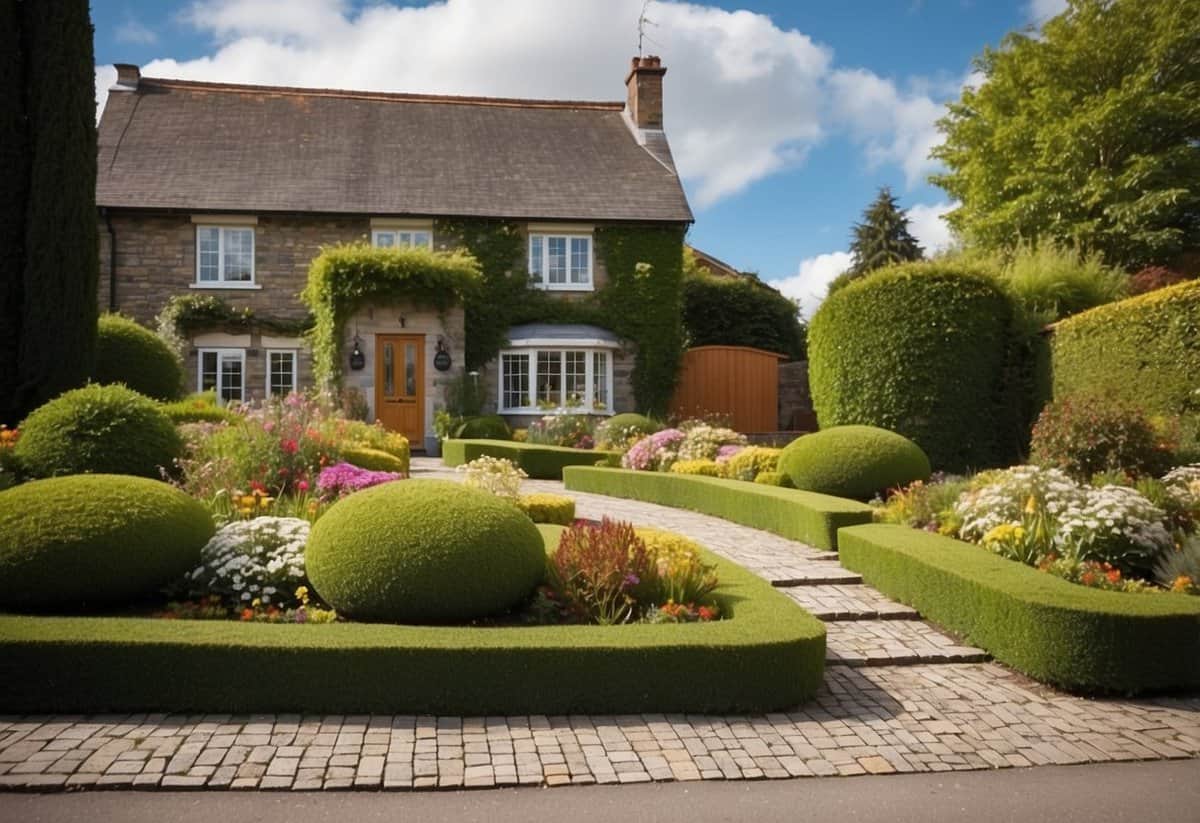
What simple changes can you make to transform your front garden into something special? From choosing the right plants to considering practical features like pathways and seating, the possibilities are endless. By exploring different landscaping options, you’ll find the perfect balance between beauty and functionality for your home.
1) Vertical Wall Planters

Vertical wall planters can transform the look of your front garden. They save space and add a splash of color to your walls. Easy to install, they allow you to grow flowers, herbs, or succulents.
A popular idea is to use wood slat fences with planters. This adds natural charm to your home. You can also try living wall panels to create a lush, green effect that changes with the seasons.
2) Symmetrical Hedges
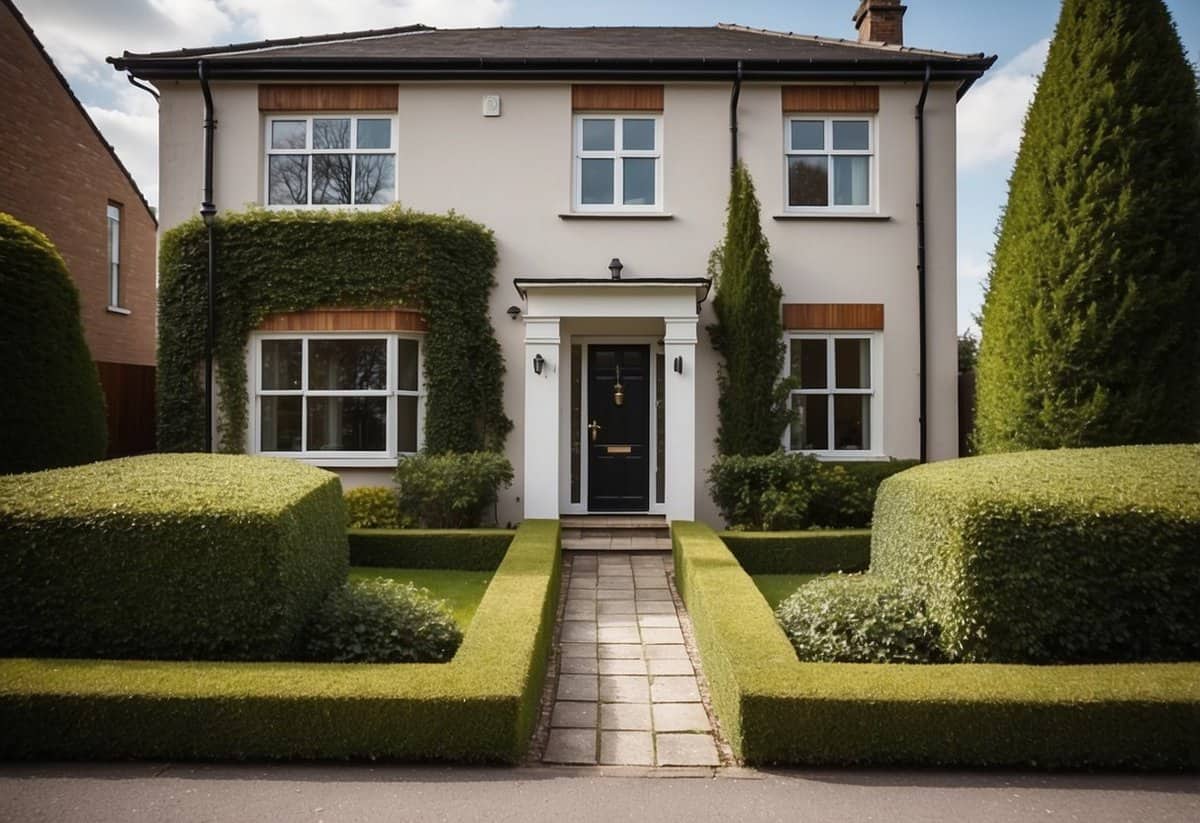
Symmetrical hedges bring balance and order to your front garden. They create a visually pleasing and well-structured look.
Start by placing identical hedges on either side of your walkway. This helps guide visitors to your front door.
Use hedges like Boxwood, which are easy to trim and shape. These can make your front yard look tidy and inviting. For more ideas, check out these symmetrical front landscaping photos on Houzz.
3) Solar-Powered Garden Lights

Solar-powered garden lights are a great way to add charm and convenience to your front garden. They’re eco-friendly and require minimal maintenance. Just place them in a sunny spot, and they’ll charge during the day.
You can use decorative solar stakes to brighten up your garden borders. They create a beautiful backdrop and look stunning when viewed from your home.
Another fun idea is to make beach glass solar lights. These give your garden a cool, seaside glow at night.
4) Pebbled Pathways
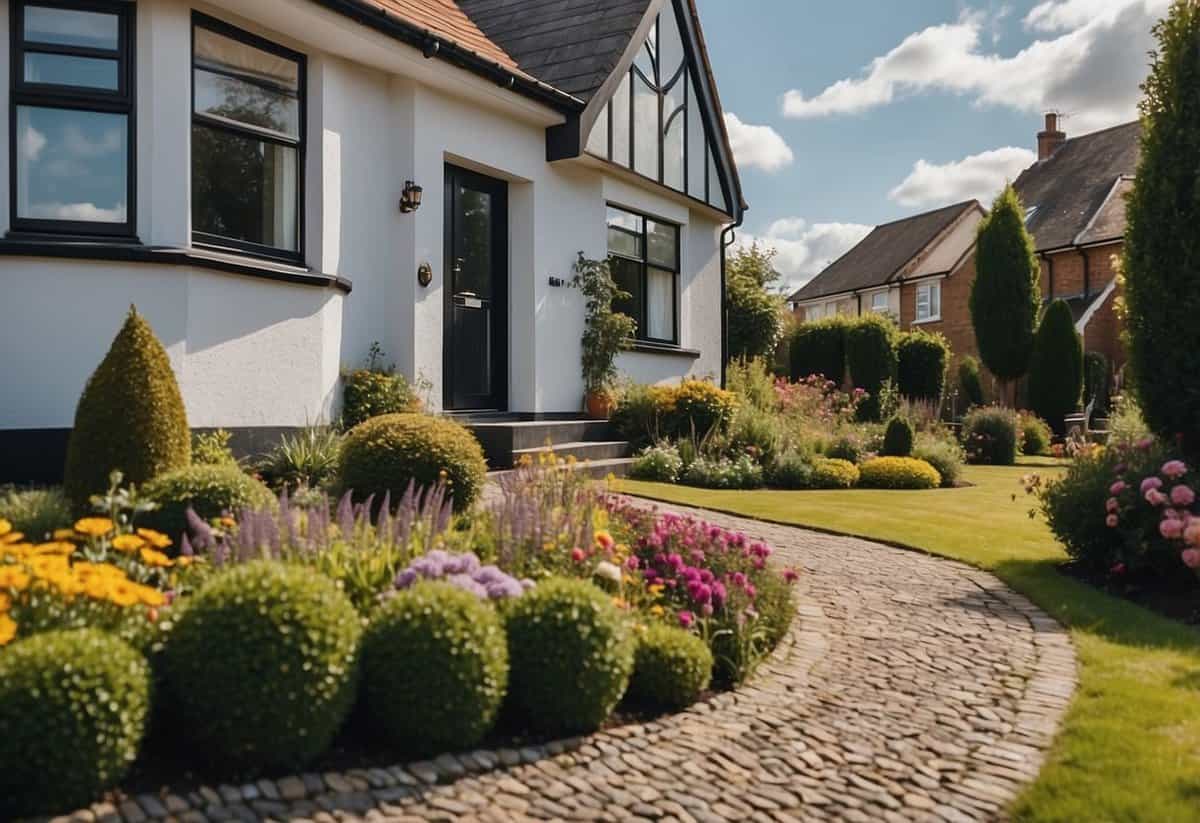
Creating pebbled pathways in your front garden adds texture and charm. Pebbles come in various colors and sizes, allowing you to customize the look to fit your style.
Pebbles are also practical. They help retain moisture in the soil and can reduce weeds. You might find landscaping with pebbles to be a cost-effective and low-maintenance option.
Using pebbles around a water feature or alongside plants can create a cohesive design. Arranging pots nearby adds to the pathway’s visual interest and continuity.
5) Raised Flower Beds
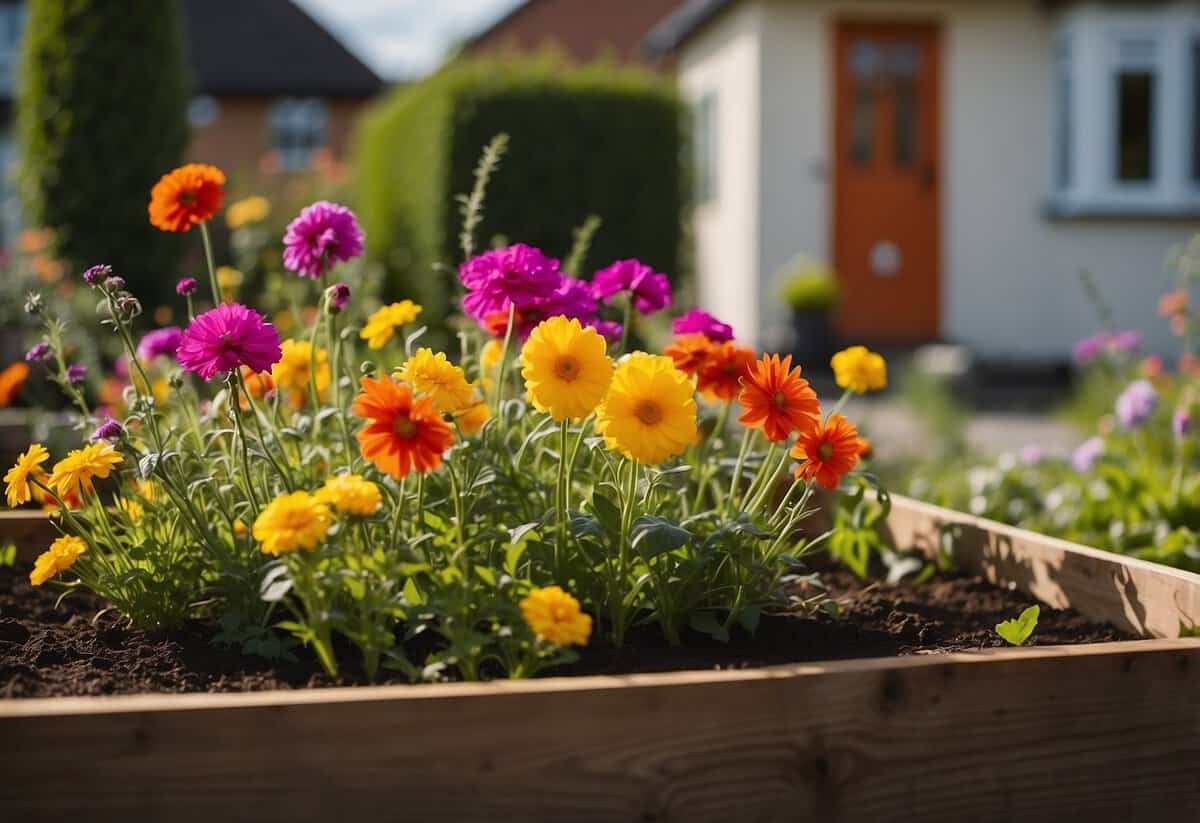
Raised flower beds are a great option for your semi-detached home. They help define spaces and can add a lot of charm.
You can use materials like wood, stone, or even recycled pallets. These beds can improve drainage and make it easier to manage the soil quality.
Mixing different plants in your raised beds can create a colorful and inviting look. Consider annuals and perennials for a varied display throughout the year. For specific ideas, check out front yard raised garden bed ideas.
6) Reclaimed Wood Benches
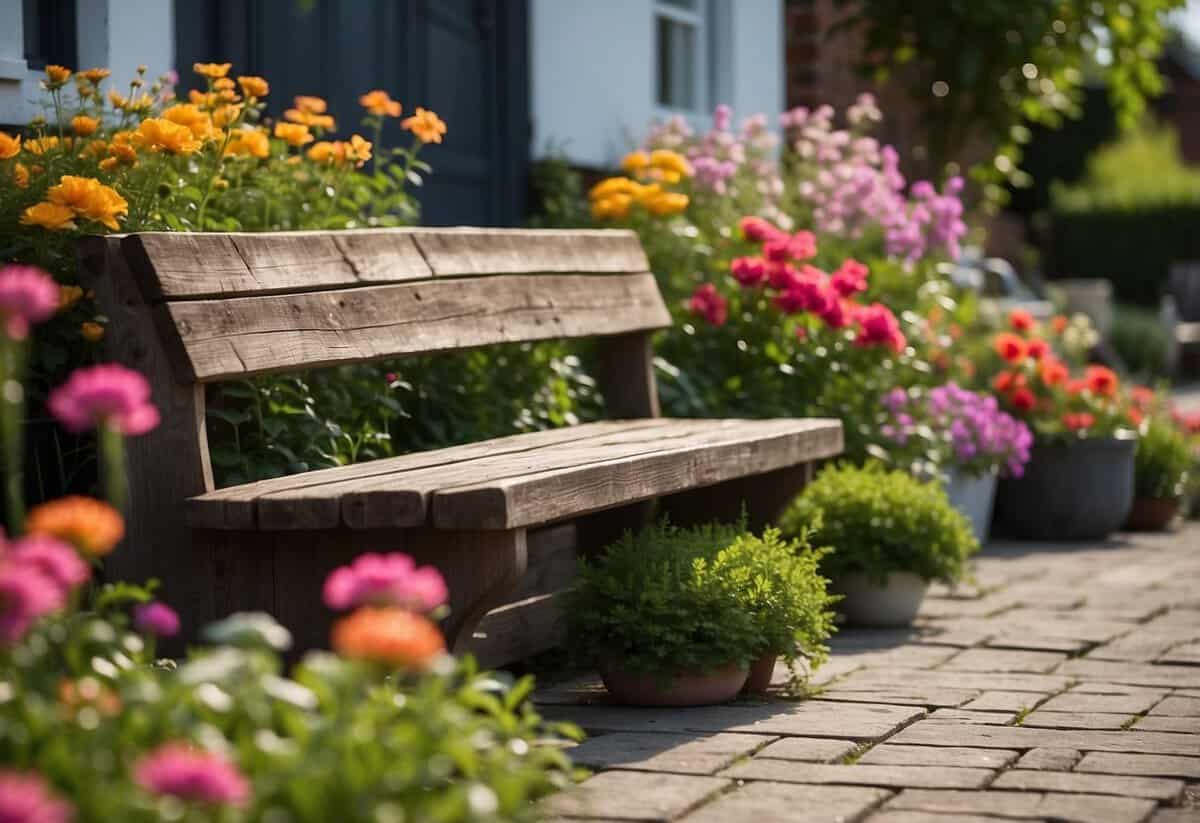
Using reclaimed wood for benches is a great eco-friendly choice. You can repurpose old barn wood or pallets to create a unique and charming design.
This type of bench fits perfectly in a garden filled with flowers and green plants. It adds a rustic feel and blends well with nature.
Plus, reclaimed wood benches are often more durable. They can withstand the weather and last for many years. To get some ideas, check out these rustic log reclaimed wood garden benches.
7) Bird Bath Focal Point
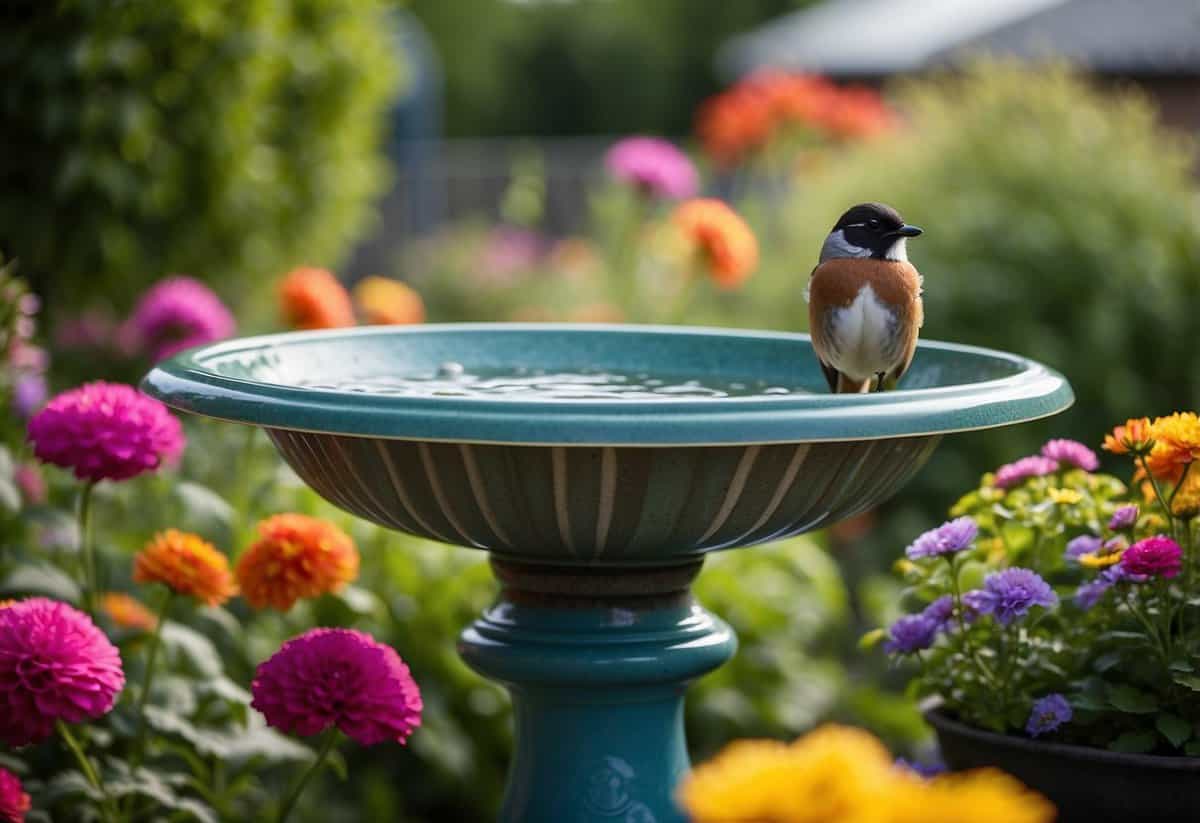
Adding a bird bath to your front garden can create a charming focal point. Consider a stone bird bath for a classic and neutral look that blends with flowers and bushes. For something quirky, you can use a repurposed vintage sink, which provides ample space for birds to bathe and adds character.
If you want a creative touch, try making a DIY vase and wood slice bird bath. It’s a fun project and can be personalized with colorful baubles. Remember to place your bird bath where it can be easily seen and enjoyed.
8) Perennial Flower Selection

When choosing perennials for your front garden, start with those that bloom at different times of the year. This way, you’ll have flowers throughout the seasons.
Consider including plants like chrysanthemums and snapdragons for autumn colors. For spring and summer, think about adding roses or peonies.
Mix in foliage plants such as ferns and hostas to add texture and depth. These can create a lush look that lasts all year.
9) Compact Garden Fountain
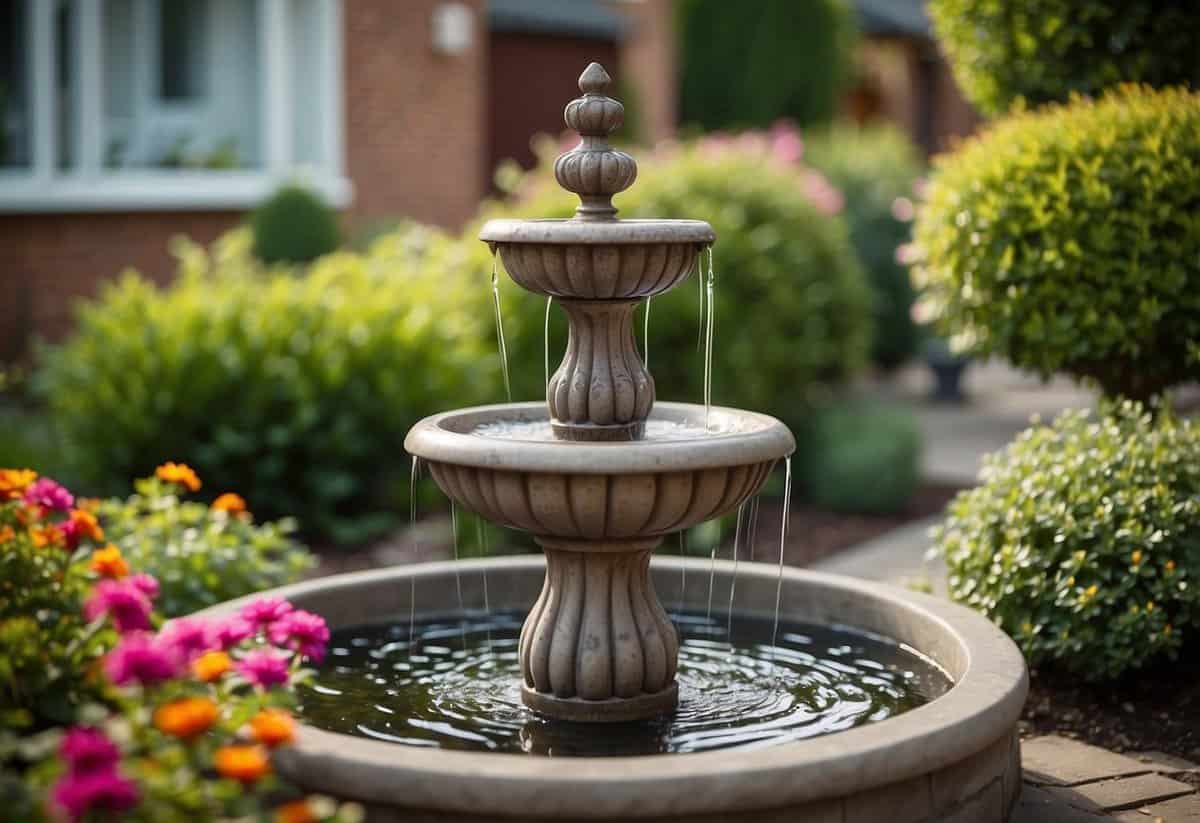
Adding a small fountain can transform your front garden into a relaxing oasis. Even in narrow spaces, a Summer Day Rocky Fountain can be a perfect fit.
Consider the charming Carrera Oval Fountain, which has a sleek and durable design that is both beautiful and long-lasting. Enjoy the soothing sound of cascading water and create a peaceful atmosphere in your front garden.
10) Herb Spiral Garden
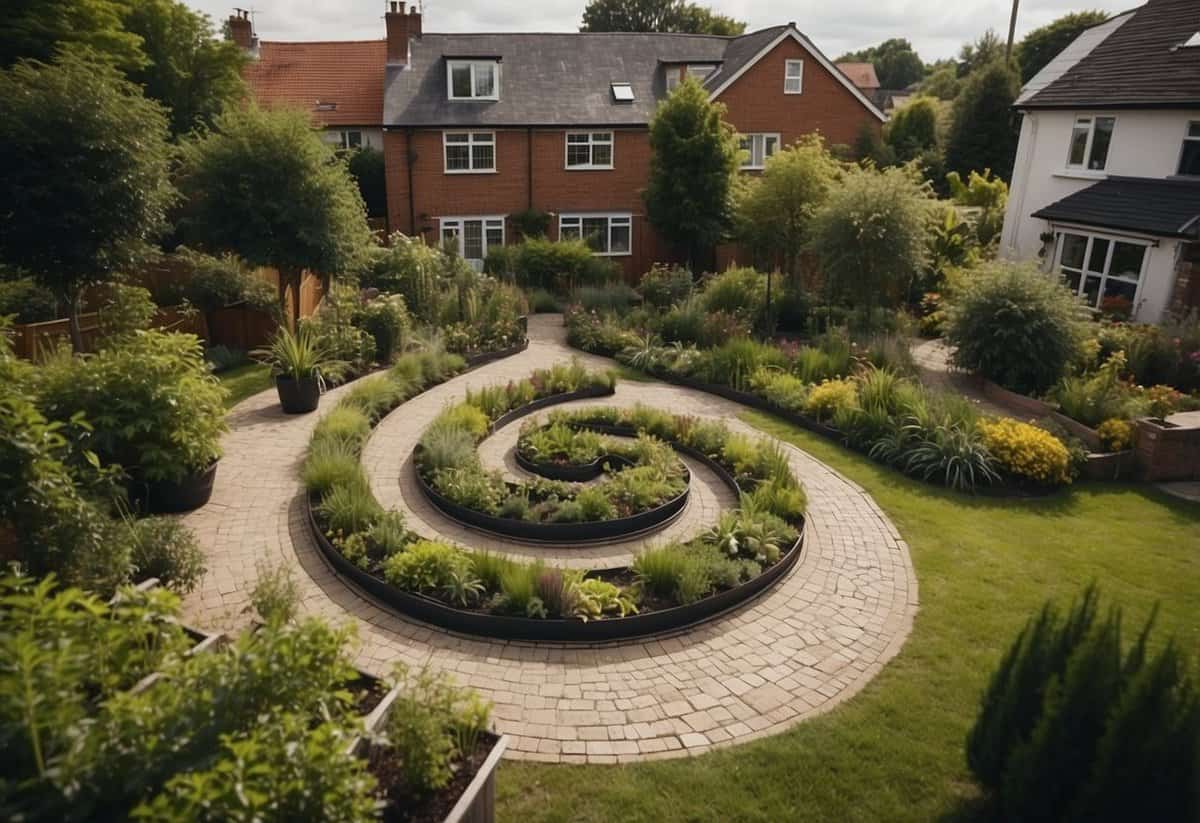
A herb spiral garden is a great way to make use of small spaces in your front yard. To start, you’ll need stones or bricks to create the spiral shape. The base should be wider and gradually narrow as it rises.
Fill the center of the spiral with soil, ensuring each layer is slightly higher than the one before it. This design allows you to plant a variety of herbs, with sun-loving herbs like rosemary at the top and moisture-loving herbs like mint at the bottom.
Building your herb spiral is both practical and visually appealing. You can find more details on how to construct it at Family Food Garden and Balcony Garden Web.
Design Principles for Front Gardens

Creating an attractive and functional front garden involves balancing visual appeal with practical use. Incorporate sustainable practices to ensure your garden remains eco-friendly and low-maintenance.
Balancing Aesthetics and Functionality
When designing your front garden, mix beauty with practicality. A well-designed landscape should not only look good but also serve a purpose. You might use pathways to guide visitors or install lighting for safety.
Consider adding seating areas to create a welcoming spot for you and your guests. Using a variety of plants in different colors, textures, and heights adds visual interest. This helps break up the space and prevents it from looking monotonous.
Including elements like water features or ornamental trees can draw attention and act as focal points. These details can enhance the garden’s overall appeal.
Incorporating Sustainable Practices
Incorporate sustainable practices to make your front garden eco-friendly. One way to do this is by using native plants, which require less water and maintenance. Native species are often more resilient and better adapted to local conditions.
Compost your garden waste to enrich the soil and reduce the need for chemical fertilizers. Installing a rainwater harvesting system can provide an alternative water source for your plants.
Choose permeable materials for pathways and driveways to reduce runoff and help water soak into the ground. Using mulch around plants can help retain moisture and suppress weeds, reducing the need for extra watering and chemical herbicides.
By taking these steps, you can create a beautiful, functional front garden that’s also kind to the environment.
Choosing the Right Plants

Selecting the ideal plants for your front garden enhances both its beauty and functionality. Focus on choosing plants that thrive in your local climate and improve your home’s curb appeal.
Climate and Soil Considerations
You must first understand your local climate and soil to choose the best plants. Some plants need full sunlight, while others grow better in shaded areas. Check whether your region is dry or gets a lot of rain. Drought-tolerant plants like Liriope are excellent for dry climates because they need less water and care. For areas with heavy rainfall, try plants that can handle wet conditions.
Next, look at your soil type. Soil can be sandy, clay, or loamy. Clay soil holds water well but might drain poorly, whereas sandy soil drains fast but may lack nutrients. Loamy soil is ideal as it balances drainage and nutrient content. Test your soil to know what you have.
Use raised beds or soil amendments to improve your soil if needed. Adding compost or mulch can help improve soil quality and keep moisture. Understanding these factors helps ensure your plants will grow healthy and vibrant.
Plants for Curb Appeal
Choosing plants that increase your home’s curb appeal can make a big difference. Roses are a classic choice, providing elegance and charm with their vibrant colors and pleasant fragrances. They can boost your home’s value and make the garden more inviting.
Agapanthus is another great option, featuring bright blue blooms that attract birds and butterflies. This evergreen shrub blooms from spring through summer and needs little pruning, making it easy to maintain.
For year-round beauty, consider using a mix of evergreen and flowering plants. Evergreens like boxwood provide structure, while flowering plants add seasonal color. Native plants often need less maintenance and can be more resistant to local pests.
Mix and match plants of different heights, textures, and colors for a visually appealing garden. Make sure to place taller plants at the back and shorter ones in front for better visibility and accessibility. These steps will create a stunning front garden that enhances your home’s exterior.
Incorporating Hardscaping Elements
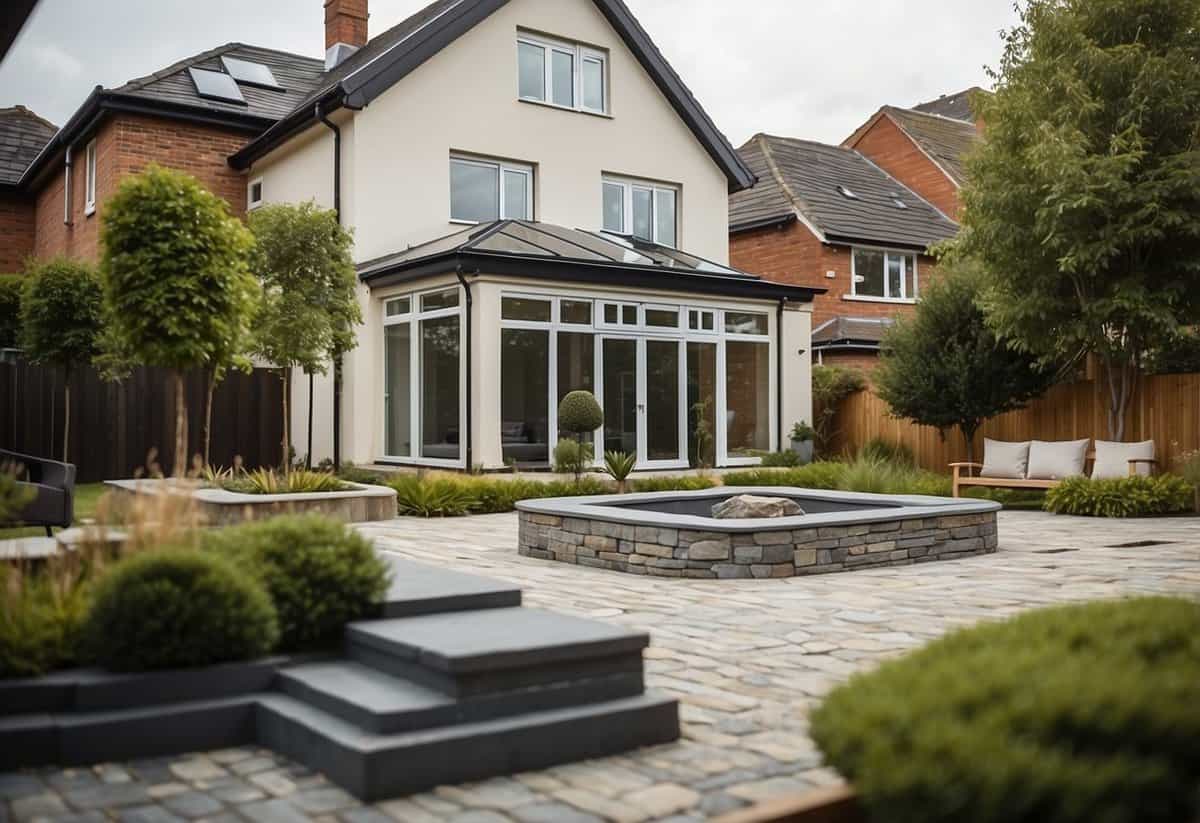
Hardscaping can add both function and beauty to your front garden. Using pathways and decorative features can make your space feel more inviting and well-organized.
Using Pathways and Borders
Pathways guide visitors smoothly through your garden. They can be made from materials like gravel, stone, or brick. For a natural look, choose irregularly shaped stones. Gravel pathways are low-cost and easy to maintain.
Borders help to define different areas in your garden. They also keep plants contained. You can use materials such as bricks, stones, or even metal edging. Bricks offer a classic look, while stones blend well with natural landscapes.
Installing a pathway:
- Plan the route.
- Select materials.
- Prepare the ground.
- Lay the pathway.
- Add finishing touches.
Creating a border:
- Choose your materials.
- Dig a trench along the edge.
- Place the border material.
- Fill in with soil.
Integrating Decorative Features
Decorative features like fountains, statues, and arbors add charm to your garden. A small fountain can be a focal point and provide soothing water sounds. Statues can express your personality and style.
An arbor can create an inviting entrance. Place it at the start of your pathway. You can also decorate it with climbing plants.
Choosing a fountain:
- Consider size and style.
- Pick a location.
- Ensure access to water and power.
Placing statues:
- Choose weather-resistant materials.
- Position them for visibility.
- Use them sparingly to avoid clutter.
Implementing an arbor:
- Select a sturdy design.
- Place at key entry points.
- Train climbing plants to grow on it.
Incorporating these elements can transform your front garden into a welcoming and attractive space.







